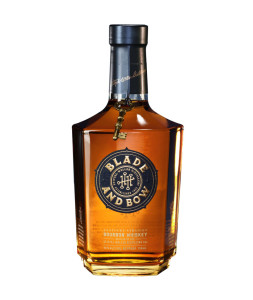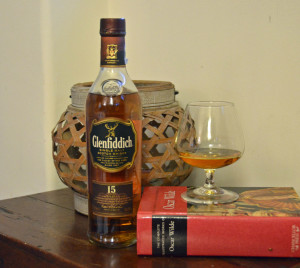By Richard Thomas
Solera aging jumped over from fortified wines in Southwestern Europe to whisky-making about 20 years ago, but it’s virtues have only been catching on recently. That slowness to spread was really only to be expected, though, since it was the boom in world whisky that has driven the adoption of new methods and the creation of new styles of products. Demand has taken us from a single Solera-aged Scotch Whisky to making the category a global one.
Or is it actually more widespread? The Solera system is both a method of maturation and a blending system. A more technical term for it is fractional blending. In a Sherry Solera, the best and most famous example of the system, rows of casks are kept stacked atop each other. The bottom casks are partially drained for bottling in the current batch, and then refilled using wine from the cask row above. This shifting of liquid goes on until the top is reached, where new wine is used to top up the casks. Since no cask is ever fully drained, in theory some of the original wine, the first batch used to “charge” the casks, always remains.
Because consistency is king for big, mass market whiskies, many companies don’t completely drain their blending vats after a bottling, leaving some of the last batch to be incorporated into the next batch. However, those vats are stainless steel, not wood, so this practice in no way contributes to maturation. To do that, you need wood, because even used wood continues to allow the contents to breath. So, that kind of fractional blending is not a Solera system.
Solera systems take all shapes and sizes, and in the whiskey industry you won’t often see rows of stacked casks serving that function. Even so, the basic principle remains the same. The one thing universal point to remember is that a Solera-aged whisk(e)y with an age statement invariably refers to the age when the whisky entered the Solera. As a rule, Solera-aging is viewed as secondary maturation, i.e. finishing, and that usually doesn’t contribute to the age number.
Glenfiddich 15 Year Old
The granddaddy of the class is this single malt, introduced by whisky legend David Stewart in the late 1990s as Glenfiddich Solera Reserve. Nowadays it’s esteemed as a major bang-for-your buck single malt.
Stewart’s system is to maintain a Solera vat, and half of this vat is drained whenever a new batch of the 15 year old is required. The volume is replaced by whiskies aged in Sherry oak, new oak and refill bourbon casks. It’s only a two-tier system, but leaving half the whisky behind in the vat ensures plenty sticks around for additional maturation.
Blade & Bow
The major American Whiskey made with Solera aging is Blade & Bow. Diageo uses a five-tier system, but you won’t see a towering, five-row stack of casks if you should visit Stitzel-Weller Distillery in Louisville; the casks are all bourbon barrels and stored as normal in a rickhouse. The transfer and blending process was described to me as laborious and “disorganized,” which makes sense when you consider having the casks stacked up as the Spanish do makes the process pretty straight-forward. Still, when in Kentucky, do as the Kentuckians do.
Another thing setting Blade & Bow apart is they started “charging” their Solera casks with 22 Year Old bourbon, the stuff that is in the Blade & Bow 22 Year Old bottles. The top tier of casks hasn’t been refilled with 22 year old bourbon, of course, not anything like it, but I have heard the youngest whiskey put in the system as being a reasonably mature six or seven years old.
Barrell Bourbon Infinite Barrel
New this year from Craft Barrell Spirits is the “Infinite Barrel,” which takes the uber-nerdy concept of the Infinity Bottle and goes large. An Infinity Bottle is a vessel kept by an enthusiast as a home blending project. When a particularly well-liked bottle is nearing its end, the remains go in the Infinity Bottle, which then becomes a rolling blend of the best stuff the owner drinks.
Barrell Bourbon is doing the same thing, only with many gallons and big vats. The first batch is reported to contain:
- Tennessee Whiskey
- Tennessee Rye
- Indiana Whiskey finished in Oloroso Sherry butts
- Indiana Rye
- Polish Malted Rye finished in Curaçao barrels (remember Barrell Rye Batch 002?)
- Scotch Whisky
- Irish Whiskey
Strictly speaking, an Infinity Barrel is not a Solera system, because there is nothing methodical or consistent about it. Craft Barrell Spirits will top up the vat with whatever they like and have on hand. Still, it’s a cousin of the Solera, if an eccentric and unpredictable one.
Hillrock Solera Aged Bourbon
Blade & Bow might be the major example of a Solera-aged bourbon, but that is by virtue of distribution. The first American entry into the category was Hillrock Solera Aged Bourbon, created by Jeff Baker and famed consultant Dave Pickerell.
Their Solera was initially “charged” with sourced bourbon, but is now topped up with Hillrock’s in-house craft bourbon, aged in small barrels. They estimate the average age of the bourbon that comes out of the system is 6 years, and the rye content must hover at a very high-rye point of 37%. Their Solera bourbon then goes into Sherry casks for what is essentially tertiary maturation.
Drayman’s Solera Aged Whisky
Down in South Africa, a humble brewstillery has set up what is (insofar as I know) the only whisky Solera that would closely resemble a Spanish Sherry Solera if you walked into the barrel house: casks stacked atop each other in neatly organized rows.
The Steward’s Solera Aged Bourbon
This Solera started out with sourced stock from Kentucky, Tennessee and Indiana, distilled between 2000 and 2007, plus craft whiskey from Colorado’s Woody Creek Distillers. Topping up continues to come from Woody Creek.
 The Whiskey Reviewer A World of Whiskey, Poured Every Weekday
The Whiskey Reviewer A World of Whiskey, Poured Every Weekday



Cape fear distillery in Elizabethtown NC just announced it was bringing a Solera whiskey out in 6 months so it’s on order.I recently received Blade and Bow from two dear friends which is also a Solera style and I love it.